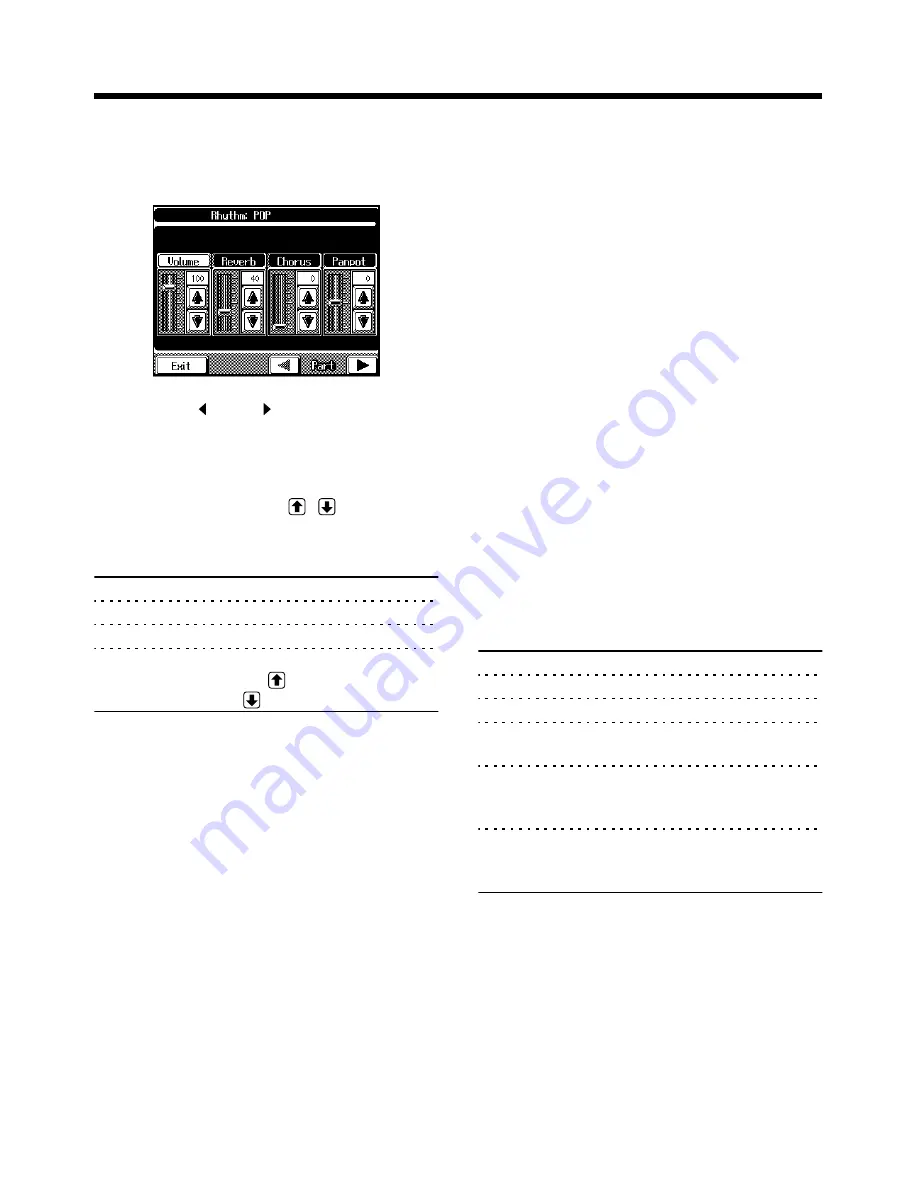
134
Chapter 7 Using Other Functions
Changing the Settings for Each Part
1.
At the Style Composer screen, touch <Options>.
The following screen will appear.
fig.07-05.eps
2.
Press Part <
> and <
> to choose the Part that
contains the settings you want to change.
The Part number and the tone name is displayed at the
top of the screen.
3.
Touch the corresponding
to change the
settings for each item.
Display
Description
Volume
Adjusts the volume level.
Reverb
Adjusts the depth of the reverb effect.
Chorus
Adjusts the amount of chorus.
Panpot
Shifts the direction the sound is heard from to the
left or right. Touch
to shift the sound to the
right, or touch
to shift it to the left.
You can change the Tone for the selected Part by
pressing the Tone Select button.
4.
When you’re done changing the settings, touch
<Exit>.
The Style Composer screen appears.
■
Creating a Style from a Song
You Composed Yourself (Style
Converter)
You can take a song you’ve composed yourself and extract
the portions you need to create your own original Style.
Note that when you’re composing a song, there’s no need to
specify all the chords. You can specify just some of the
chords, and working on that, the KF-90 automatically
extrapolates the other chords, and arranges the style.
The Style Converter has an “Auto Mode” for creating Music
Styles simply from a song with a single chord, and a
“Manual Mode” for creating a Music Style from a song of
three chords (major, minor, and diminished seventh).
When you’re creating a song for User Style, think about the
structure of the style.
The Makeup of a Style
A Music Style is made up of five performance parts:
“Rhythm,” “Bass,” “Accompaniment 1,” “Accompaniment
2,” and “Accompaniment 3.”
Also, a song progresses in a sequence, such as intro, melody
A, melody B, bridge, and ending.
With the KF-90, such changes in songs are allocated to the
following six performance states. The six performance states
are called “Divisions” for Style.
Division
Performance division
Intro
The intro is played at the start of a song.
Ending
This is played at the end of a song.
Original
This is a basic accompaniment pattern.
Variation
This is a developmental
accompaniment pattern.
Fill In To Variation
This is a one-measure phrase inserted
at a juncture where the mood changes.
It is used to make a song more lively.
Fill In To Original
This is a one-measure phrase inserted
at a juncture where the mood changes.
It is used to make a song more sedate.
You can make a song more lively or more restrained by
increasing or reducing performance parts by Divisions. You
can also modify a song by changing the tone of the
performance parts by Divisions.
Summary of Contents for KF-90
Page 20: ...20 Before You Play MEMO...
Page 21: ...21 Quick Start Quick Start...
Page 27: ...27 Playing the Keyboard Quick Start MEMO...
Page 33: ...33 Playing with Accompaniment Quick Start MEMO...
Page 191: ...191 MEMO...
Page 192: ...192 MEMO...
Page 196: ...KF 90 Owner s Manual 02123634 02 7 C2 61N This owner s manual is printed on recycled paper...






























